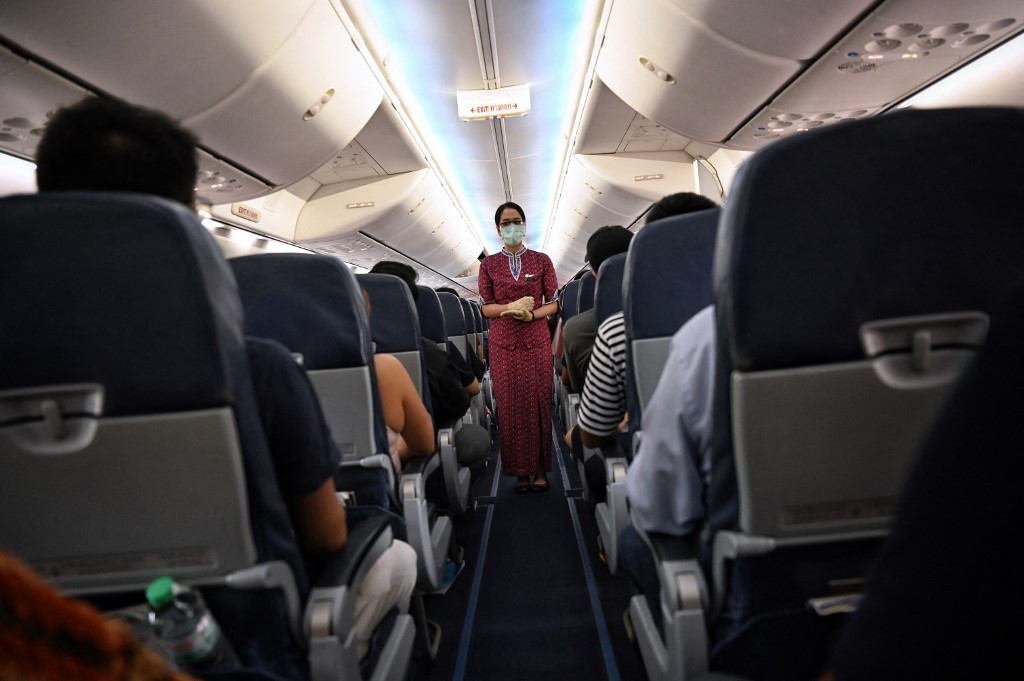How tourism can adopt digital technology to survive the pandemic
Resorts, hotels and other vacation sites need to design safe bubble protocols; for example, by only allowing people who are negative and vaccinated to visit and testing their staff daily to ensure that the bubble is not breached.
Change Size

A
n interesting fact is that during the pandemic, online e-commerce platforms in Indonesia have seen an increase in transactions. This shows that people are getting more and more comfortable with digital transactions because they are convenient and most importantly, prevents customers from contracting COVID-19.
However, there are businesses that have been hit hard by the pandemic, especially those related to tourism. One of the reasons is because they offer a physical experience to customers. Beach resorts, for example, offer the feel of the sandy beach and the warm sensation of sunbeams during sunrise and sunset. Similarly, the value of a night market lies in the taste of the food and the experience of strolling through alleys and bargaining over artistic souvenirs with local artists.
Yet nothing physical can be offered during the C0VID-19 pandemic. And all of these physical experiences cannot be replaced by digitalization. Although many have tried to offer digital tourism experiences, such as virtual tours of various places, this cannot fully replace the experience of traveling and tourism – the physical sensation of getting away from the everyday routine and immersing yourself in distant, completely new locations.
So, can digital technology be applied to tourism?
Yes, but first of all, we need to bring the physical experience of traveling and vacationing to the pandemic. The only way to do this at the moment is by creating safe bubbles. A safe bubble refers to a controlled environment where everyone physically participating in a particular location has tested negative of COVID-19 and is fully vaccinated. This lowers their risk of contracting and spreading the virus.
Resorts, hotels and other vacation sites need to design safe bubble protocols; for example, by only allowing people who are negative and vaccinated to visit and testing their staff daily to ensure that the bubble is not breached. The safe bubble approach is the best practice we know of at the moment to allow physical activities. A few countries have experimented with the application of safe bubbles, such as in concerts or in restaurants. Thailand, through the Phuket Sandbox policy, is conducting the largest safe bubble experiment in Southeast Asia.
Second, this is where digital technology plays an important role. Digital technology should protect and prevent people from spreading and contracting the virus when they are enjoying tourist destinations. As an example, technology can help strengthen a safe bubble through more intensive movement monitoring.
The use of the internet of things, tokens and other locator devices might help with tracking the movement of customers of a resort to ensure that they are protected. The same technology can be used to redesign the holiday experience without generating large crowds. For example, resorts can use the technology to develop queuing scheduling systems for customers to enjoy beaches, gyms and other resort activities safely.
The use of GPS location tracking can help automatically change the booking and rescheduling roster if the persons are not near the place during the designated time, so the slots can be given to others. This approach can also be applied to tourist destinations such as national parks, cultural heritage places and other places of interest.
Third, the tourist destination safe bubble can be extended to other existing bubbles by using technology. For example, data from the existing safe flight bubble in Indonesia – that only those whose PCR tests came out negative and are vaccinated can fly – should be able to be integrated to the tourist destination systems, so the costs of creating safe bubbles can be shared among different service providers. Tracing and tracking can also be conducted easily when these systems are in place.
Fourth, data will become important for tourism-related businesses. This creates various opportunities for existing technology companies, such as online platforms, to further enter tourism and integrate with other industries, such as health and transportation, as well as to introduce and share their expertise in managing data, security and new technology.
Sounds complicated? Of course, managing tourism businesses and going on vacation will not be the same as before the pandemic. There will be no business-as-usual, as C0VID-19 has significantly changed the way we live. Other countries, like Singapore, have even prepared to open the economy and treat COVID-19 as endemic.
It seems that tourism may get back its lifeline only by bringing back the physical experience of traveling and vacationing, but this time, the support of digital technology is imperative to ensure the health and safety of everyone.
***
The writer is head of Center for Innovation, Design, and Entrepreneurship Research, Binus University International. These views are personal.









